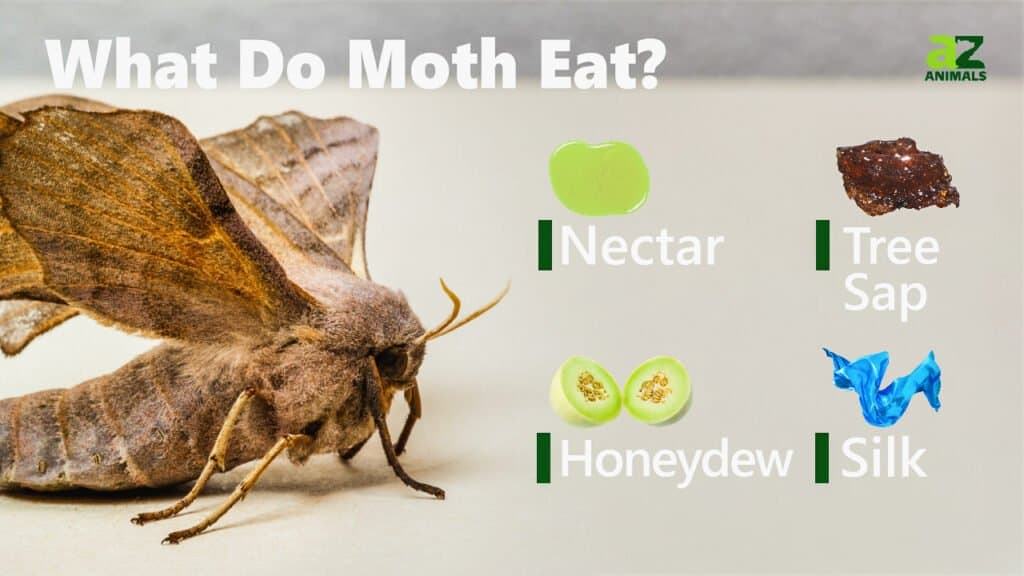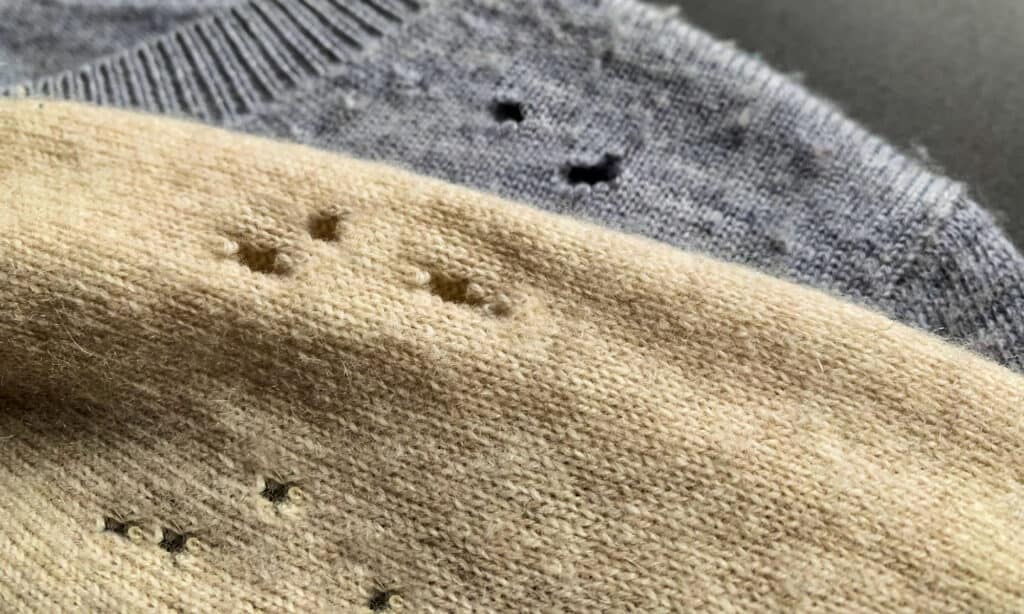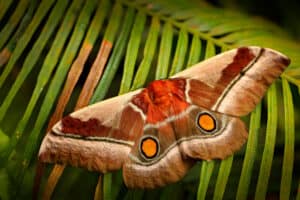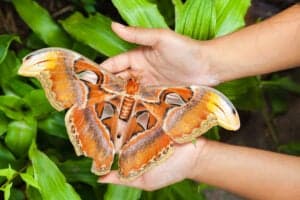Moths are insects that start off as caterpillars in the early stages of their lives. Most species eat leaves aggressively at the caterpillar stage, especially the gypsy moth. Their feeding pattern has little changes even when they become adults. That makes it understandable why several trees in the wood are without leaves.
While moth feeding isn’t a problem, the poop is as it can leave everywhere messy, particularly when they invade a property. You might be wondering: Is moth poop harmful? Is it controllable? This article has the answers to all your questions. Read on to learn everything you’ve ever wanted to know about moth poop.
What Does The Moth Poop Look Like?

Moths deposit their waste at their feeding spot, which is why you might see their waste products concentrated in an infested location.
©iStock.com/noriver
Depending on the species, moth poop tends to appear differently. This insect produces clusters of small grains that look like tiny balls as its digestive waste. The more leaves they consume, the more poop or frass they tend to excrete.
It’s not that difficult to see this insect’s scat. Moths deposit their waste at their feeding spot, which is why you might see their waste products concentrated in an infested location.
Other places where you can find moth poop include decks and driveways. Their frass can make footpaths in homes look creepy, and you may need to be very careful when passing through such an area.
At the caterpillar stage, moth poop is usually tiny. However, it becomes more visible when it eventually evolves into a moth. The appearance of the poop also changes because the adult consumes more leaves.
Is Moth Poop Harmful?
Touching frass cannot harm humans. However, ingesting it can make you sick. This is because moth poop is a contaminant. It weakens the body system when ingested. However, whether or not you have symptoms of sickness after ingesting the poop depends on how strong your immune system is. The common symptom is fatigue: You can begin feeling weak even when you don’t engage in rigorous activities. At that point, you should see your physician for proper examination.
Aside from the effect they have on our health when ingested, a buildup of the poop on pathways is dangerous because of its sliminess. Young children and even adults can slip if they walk on it. Moreover, you may feel irritated when you see the poop build up at specific spots in your home. It can make the environment appear untidy and can be a problem to people with allergies. That makes it essential to clean your environment as soon as you notice the build-up.
What Do Moths Eat?

Moth caterpillars are natural herbivores — they feed on plants. Adult moths also eat leaves, but some species prefer flowers and seeds. The species that prefer to eat flowers do not find leaves sufficient to satisfy their nutritional needs. So, they devour seeds and buds to fill their stomach.
But apart from plants, these insects also consume animal wastes. This shows that moths are also scavengers and as scavengers, they will eat anything they see, including processed foods. Plants, however, remain at the top of the list of their available dietary options.
Interestingly, moths don’t drink water. However, they suck fluids such as flower nectar to maintain optimum energy. They also feast on bird poop and other animal frasses. Chewing organs in their primitive phase enables them to eat anything nearby. That makes it understandable why they feed on furniture, hair, and paper dust.
Do Moths Eat Clothes?

Moth caterpillars destroy clothes.
©Little Adventures/Shutterstock.com
It’s a common misconception that moths eat textiles. Many people make this assumption because of the holes they notice in their clothes. However, moths don’t eat clothes. The actual culprits destroying your wear are the caterpillars.
The female moth sometimes lays eggs on clothing materials. After 4-10 days, these eggs hatch into caterpillars which begin to dwell on your clothes. It is necessary for them to feed on something during the growth stage, and since your clothes are their first home, the caterpillars will eat through the fabric until they can fend for themselves through other means.
Is Moth Poop Controllable?
Controlling moth droppings begins with removing the larvae before they grow into adults. Although the adult moth is harmless, the larvae can be highly destructive. They will consume whatever they see within their proximity. You can even lose valuable properties to these insects at the early stage of their lives.
Likewise, adult moths can constitute a nuisance to your environment. For instance, their poop can leave your outdoor space messy. That makes it imperative to prevent the nuisance this insect can create for your household.
Homeowners can employ different methods to manage moth presence on their property. Cedar oil mixed with water can send these insects away from your home. Also, a sticky trap helps to capture moths, making it easy to deal with the issue before it gets out of hand. To keep your clothes safe from moths, hang a bag with powdered herbs closer to your wardrobes. The scent produced by the herb irritates moths. So, they prefer to stay away from such a location.
Up Next:
- Fly poop: Everything You’ve Ever Wanted To Know
- Otter Poop: Everything You’ve Ever Wanted to Know
- Termite Poop: Everything You’ve Ever Wanted To Know
The photo featured at the top of this post is © PixHound/Shutterstock.com
Thank you for reading! Have some feedback for us? Contact the AZ Animals editorial team.






